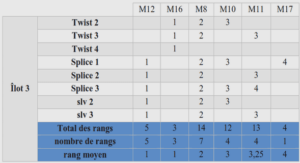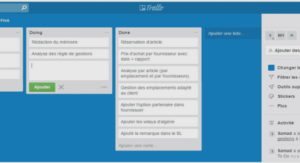Variation of the water retention properties of soils
Les propriétés de rétention en eau des sols varient en fonction de leur composition et elles sont encore largement discutées. De nombreuses fonctions de pédotransfert (fpt) permettant de les prédire ont été développées mais leur validité n’a été que rarement discutée. Dans cette étude, nous comparons les performances de classes de fpt texturales et texturo-structurales développées en utilisant un même jeu de données. Nous montrons que les classes de fpt conduisent à des performances de prédiction qui sont meilleures ou similaires à celles enregistrées avec les fpt plus sophistiquées étudiées par ailleurs dans cette étude. Ainsi, les classes de fpt texturales et texturo-structurales qu’il est aisé d’établir sont potentiellement des outils utiles pour la prédiction des propriétés de rétention en eau des sols, en particulier aux échelles auxquelles seules des données semi-quantitatives ou qualitatives comme la texture sont disponibles. Plus généralement, nos résultats mettent en évidence que les performances des fpt devraient être discutées en prenant comme référence celles enregistrées avec des fpt faciles à établir comme les classes de fpt texturales. En procédant ainsi, il est alors possible d’apprécier le gain de performance en terme de biais et de précision quand on complexifie les fpt et que l’on accroît le nombre et la qualité des caractéristiques de sols requises.
Water retention properties of soils vary according to soil characteristics and understanding of their variation remains controversial. Numerous pedotransfer functions (ptfs) that enable prediction of the water retention properties of soils were developed but their validity was poorly discussed. In this study we compare the performance of textural and texturo-structural class-ptfs with more sophisticated class- and continuous-ptfs developed using the same set of soils. We showed that the former led to prediction performance that are better or similar to those recorded with the more sophisticated class- and continuous-ptfs studied. Thus, textural and texturo-structural class-ptfs that are quite easy to establish are potentially worthwhile tools for predicting the water retention properties of soils, particularly at scales for which semi-quantitative or qualitative basic soil characteristic such as the texture are the only characteristic available. More generally, our results pointed out that the discussion of ptfs performance should refer to those recorded with easy to establish ptfs, thus Understanding of soil water retention properties of soil remains a major issue in soil science. Because of the growing demand for soil hydraulic properties, a common solution has been to use pedotransfer functions (ptfs) that relate basic soil properties that are considered as easily accessible to the less often measured soil properties such as hydraulic properties (Bouma et van Lanen, 1987). A huge number of ptfs was developed over the last three decades and we are facing today to the continuous development of ptfs of increasing complexity with very little or no information about the potential increase in the prediction quality. There is some information available about the performance of continuous-ptfs (Minasny et al., 1999; Wösten et al., 2001), very little about the performance of class-ptfs (Ungaro et al., 2005; Wösten et al., 2001) and less again about the compared performance of these two types of ptfs (Wösten et al., 1995). The aim of this study is to show that variation of water retention properties can be predicted by using stratification based on information about particle size distribution and structure. We show also that the quality of the prediction is similar or better than with much more sophisticated ptfs despite what is usually admitted.
Most ptfs published in the literature are continuous-pedotransfer functions (continuous- ptfs), i.e. mathematical continuous functions between the water content at discrete values of potential or the parameters of a unique model of water retention curve and the basic soil properties (mostly particle size distribution, organic carbon content and bulk density) (Pachepsky et al., 2006; Wösten et al., 2001). Besides these continuous-ptfs that enable continuously the prediction of water content at particular water potentials (Rawls et al., 1982) or estimation of the parameters of models of the water retention curve (Cresswell et al., 2006; Nemes et al., 2003; Wösten et al., 2001), there are class pedotransfer functions (class- ptfs) that received little attention because their accuracy is considered as limited (Wösten et al., 1995). The existing class-ptfs provide often average water contents at particular water potentials or one average water retention curve for every texture class (Bruand et al., 2003; Nemes et al., 2001). Due to the range in particle size distribution, clay mineralogy, organic matter content and structural development within each texture class, water retention properties for individual soils were considered as varying considerably (Wösten et al., 1999). Despite their possible inaccuracies, class-ptfs enable the prediction based on successive stratification using soil characteristics. Moreover, class-ptfs are easy to use because they require little soil information and are well adapted to the prediction of water retention properties over large areas (Leij et al., 1999; Wösten et al., 1995; Wösten et al., 1999). There is some information available about the performance of continuous-ptfs (Nemes et al., 2003; Wösten et al., 2001), very little about the performance of class-ptfs (Ungaro et al., 2005; Wösten et al., 2001) and less again about the compared performance of these two types of ptfs (Wösten et al., 1995). B. The soils studied.



